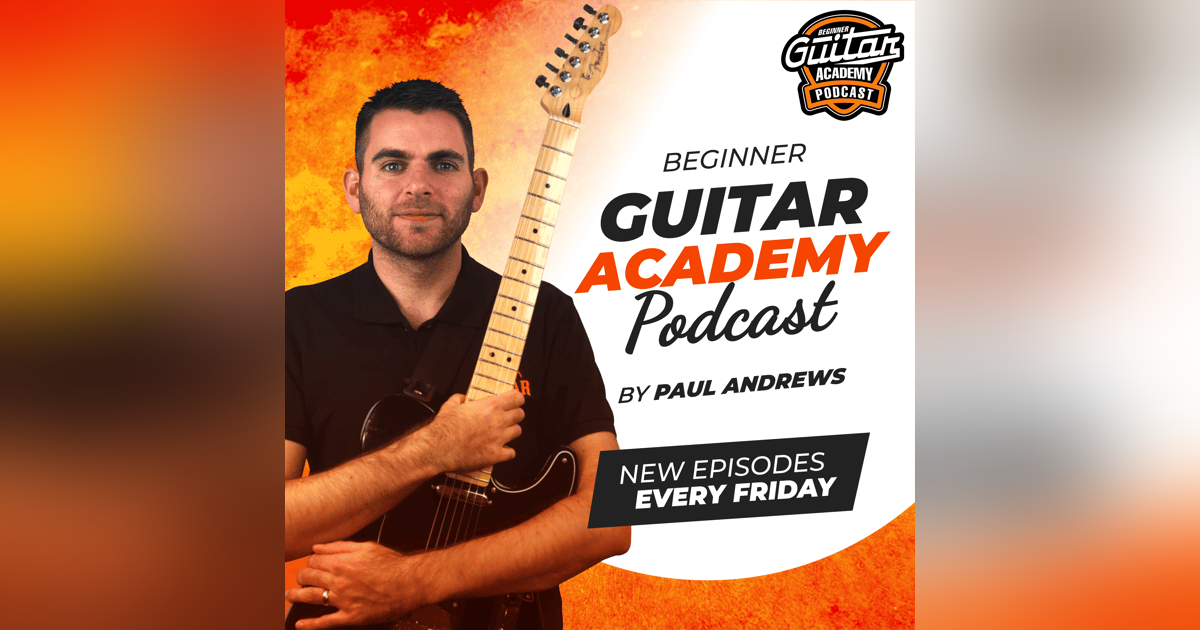246 - How to Solo Over a Major Blues Progression
This week, Paul continues the deep dive into blues guitar, building on foundation concepts from Episode 245. The focus shifts to soloing over a major blues progression—specifically, what scales to use, how to target chord tones, and the techniques that legendary blues artists like B.B. King, Eric Clapton, and Stevie Ray Vaughan employ in their solos.
Key Topics Covered
Recap: Major vs. Minor Blues (12-Bar Blues Structure)
- Definition and structure of a 12-bar major blues progression using dominant 7 chords (A7, D7, E7).
- Why the turnaround bar matters, and options for looping or finishing the progression.
Foundational Scale for Soloing
- Why the A minor pentatonic scale (A, C, D, E, G) works so well, even over major blues progressions.
- The “bluesy” tension created by overlapping the scale’s minor third (C) against the chord’s major third (C#).
Targeting Chord Tones for More Musical Solos
- Root, third, and flat 7th notes of each dominant 7 chord (A7, D7, E7).
- How to start by simply hitting the root notes as the chords change, or add more complexity by incorporating other chord tones.
- Examples: bending C to C# for A7, sliding to F# for D7, emphasizing B for E7.
Making Your Solos Sound More Interesting: Advanced Scale Choices
- Major Pentatonic Scale: Adds brightness and connects with more chord tones.
- Blues Scale: Introduces the flat five (the “devil’s note” for added tension).
- Mixolydian Mode: A sophisticated, more “perfect” match for dominant 7 chords.
Blues Soloing Approaches of the Legends
- B.B. King: Simple, expressive phrases in the “BB box,” blending major and minor pentatonic. Focuses on bending and vibrato over flashy scale runs.
- Stevie Ray Vaughan: Aggressive mixing of major and minor pentatonic, with embellishments like hammers, pull-offs, and expressive picking.
- Eric Clapton: Known for chord tone targeting, major-minor pentatonic blends, and signature licks that follow the progression.
Practice Tips
- Start by jamming over backing tracks with A minor pentatonic.
- Progress to targeting root notes and other chord tones as the progression changes.
- Add in extra notes from the major pentatonic, blues scale, or Mixolydian mode as you become comfortable.
- Don’t rush—focus on phrasing, feel, and emotion, not just speed and complexity.
Resources & Recommendations
- Backing Tracks & Playlists:
- Academy members: Check the dashboard’s backing tracks section for new major and minor blues tracks. Search “A blues backing track” on YouTube or Spotify.
- Spotify Playlist: https://open.spotify.com/playlist/5qoEzDgKllxygGKgQGjei4?si=Nj7PFvFKREiOvbi8OmZy4Q
- Join the Discussion: Academy members: Share your favorite tracks or soloing progress on the forum!
- Not Yet a Member? Try Beginner Guitar Academy with a $1 two-week trial: beginnnerguitaracademy.com
Final Thoughts
The essence of blues soloing is feel—the right note, at the right time, with the right emotion. Start with the basics, experiment slowly, and let the greats inspire you.
Subscribe, leave a review, and—most importantly—keep practicing!














